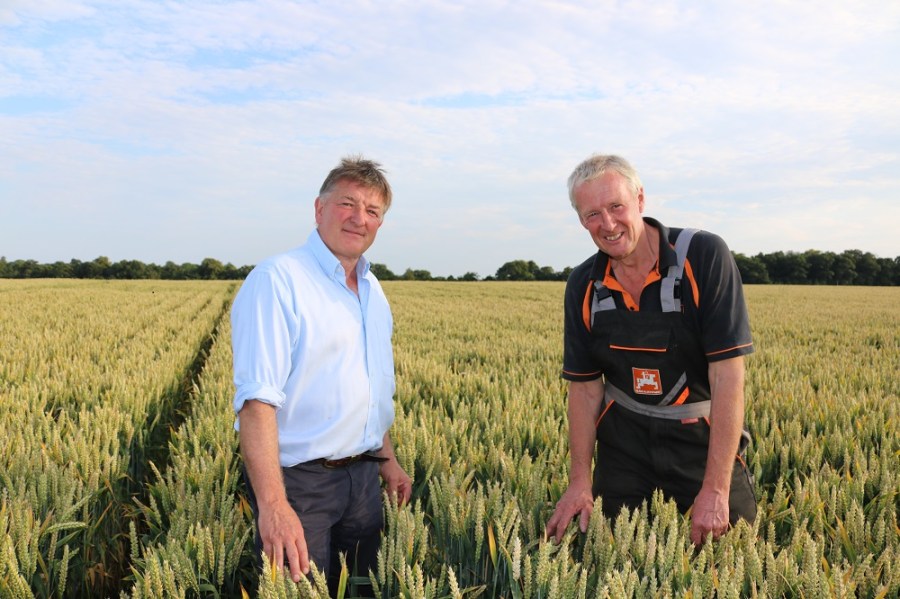A seven-year establishment trial has found there’s no difference in yield between a deep and shallow cultivation regime. But diesel costs across the 12 plots of the trial carried out by Amazone were as much as six times greater for the most intensive regime, compared to the minimum-pass system.
The trials at Tickhill, near Doncaster, Yorks, have been run across a standard arable rotation on deep limestone clay since 2009. The plots are tramline width (28m) and cover 0.2ha. in total. Four cultivation routines have been practised across the site, explains Simon Brown of Amazone, who’s conducted the trials.
“The whole site is stubble cultivated with a Catros compact disc harrow to 8cm depth and then one plot is ploughed to 25cm. Two are min-tilled with a Cenius multi-row mulch cultivator to a depth of 22cm and 15cm, while the last plot gets another shallow pass of the Catros.”
Three different drills are applied across the plots – an AD-P Super power-harrow combination drill, a Cirrus cultivator drill and a Cayena tine seeder. “All plots were treated the same from then on and we measured emergence and final yield,” he continues.
Over the course of the trial, across all crops, which so far have included four winter wheats, a winter barley and oilseed rape, there’s been no discernible yield benefit from the more intensive cultivation. “The conservation tillage techniques match the yields generated by the traditional plough-based system. This goes for the shallow, Catros-only system, too, although there was more yield variation here,” notes Simon Brown.
But there was a significant difference in fuel costs. “There seems to be a linear relationship between depth and fuel consumption as increasing the depth by a third resulted in 30% higher fuel use. Active sowing with the AD-P used far more fuel than either the Cirrus or Cayena, to the extent it was cheaper to plough and passive drill than min-till and use the AD-P.” (see chart below).
The cheapest cultivation routine used just 11.5 litres of diesel, with the most expensive coming in at 63 litres. The average wheat yield over the rotation across the site was 12.18t/ha. The soil organic matter of the plots was measured in Aug2014, and was found to be 4% – in line with the rest of the field – apart from in the shallow-cultivated plot where it had improved by 0.3%.
Peter Dook of Woolthwaite Farm, who hosts the trials, usually ploughs, makes a seedbed with a spring-tined cultivator and drills with a Cirrus drill. “It’s costly, but reliable and rainfast, and the plough does a drainage job on poorer land.
No negative effect
“I thought this trial would come unstuck by year three and create a pan. But it’s not needed any subsoiling nor has there been a negative effect on the soil husbandry. The best system appears to be min-till to 15cm – that brings consistent yields with considerable fuel savings.”
Last year, as an experiment, another plot was introduced, drilled with an Amazone EDX precision airplanter, adds Simon Brown. “It’s built for maize, but you can drill with it what you want and it will precision plant at speeds up to 15km/h.”
The seeder units are at 50cm widths, so the drill was passed through twice, resulting in 25cm row widths. “We drilled at just 90 seeds/m², but establishment was very good, and it yielded just 4% down on the conventionally drilled plots. As we move to hybrids, and more technology is placed on the seed, perhaps this will be a way to benefit from new technology without costs spiralling upwards,” he suggests.
at just 90 seeds/m², but establishment was very good, and it yielded just 4% down on the conventionally drilled plots. As we move to hybrids, and more technology is placed on the seed, perhaps this will be a way to benefit from new technology without costs spiralling upwards,” he suggests.
Results from other Amazone trial sites across Europe show similar results, although in most cases, the most extensive cultivation resulted in significantly poorer yields. Consistently the best results were achieved at a cultivation depth of around 15cm.




